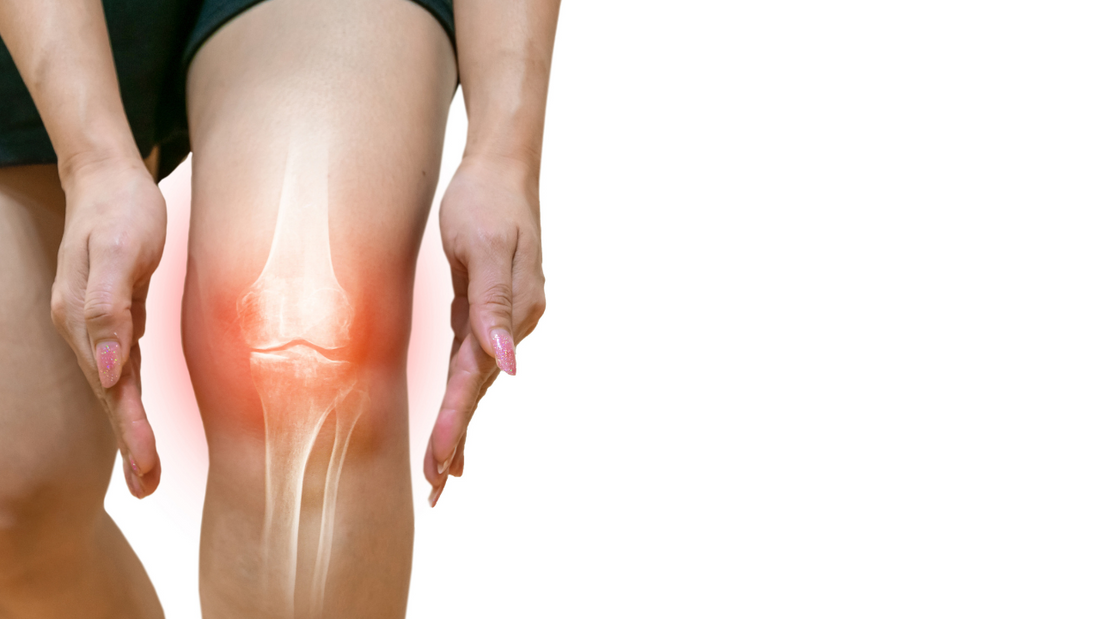Introduction
Inflammation is the body's natural response to being hurt or getting sick. It is a complicated process that involves the activation of immune cells, the release of inflammatory mediators, and the flow of blood to the affected area. The main goal of inflammation is to get rid of the cause of an injury or infection, repair damaged tissue, and keep the body from getting hurt any more.
Redness, swelling, pain, and heat in the area are all signs of inflammation. The release of inflammatory mediators like histamine and prostaglandins, which cause blood vessels to widen and become more permeable, is what causes these symptoms. This causes more blood to flow to the area and fluid to build up there, which makes it swell. The feeling of heat is also caused by the increased flow of blood and the release of substances that make heat.
Even though inflammation is part of the healing process, too much of it can cause a number of health problems. Chronic inflammation is marked by the continued activation of immune cells and the release of inflammatory mediators, which can damage tissue and lead to diseases like cancer, heart disease, and autoimmune disorders. Because of this, it is important to control inflammation and stop it from becoming chronic.
Signs and Symptoms
The signs and symptoms of inflammation depend on where the injury or infection is and how bad it is. Some of the most common symptoms and signs of inflammation are:
- Redness: Inflammation makes blood vessels widen, which increases blood flow and causes red blood cells to gather in the affected area. This can make the skin look pink or red.
- Inflammation also makes the blood vessels more permeable, which lets fluid leak out into the surrounding tissue and cause swelling. This can lead to edema, or swelling, in the area.
- Pain: Inflammation can cause pain because it causes chemicals like histamine and prostaglandins to be released. These chemicals stimulate nerve endings, which causes pain. Pain can also be caused by the swelling and the pressure it puts on nerve endings.
- Heat: When an area is inflamed, the blood flow increases and substances that make heat, like histamine, are released. This makes the area feel warm or hot.
- Some other signs of inflammation are:
- Loss of function: Inflammation can cause pain, stiffness, and swelling, which can make it hard to move and use the affected area.
- Fatigue: Inflammation can make you tired because it makes your body use more energy and makes it harder to sleep, both of which can make you tired.
- Fever: When there is inflammation, cytokines are released, which can cause the body's cells to make more heat. This can lead to a fever.
It's important to remember that not all types of inflammation cause all of these symptoms, and that the severity of the symptoms can vary. In some cases, inflammation might not cause any symptoms that you can see.
Types
There are two main types of inflammation: short-term (or "acute") and long-term (or "chronic").
Acute inflammation is a short-term response to an injury or infection that usually lasts from a few days to a few weeks. It is marked by the quick activation of immune cells and the release of inflammatory mediators, which help get rid of the cause of an injury or infection and repair damaged tissue. Most of the time, acute inflammation is good and necessary for the healing process.
On the other hand, chronic inflammation is a long-term reaction that can last for months or even years. It is marked by the continued activation of immune cells and the release of inflammatory mediators, which can damage tissues and lead to diseases like cancer, heart disease, and autoimmune disorders. Chronic inflammation is often linked to autoimmune diseases and other long-term health problems, like being overweight, having diabetes, or being stressed out. It is often not as obvious as acute inflammation, and it may not even cause any obvious symptoms.
There are also different kinds of inflammation based on where the injury or infection is. For instance, there are:
- Systemic inflammation is when the whole body is inflamed.
- Localized inflammation is when the inflammation is only in one area or organ.
- Inflammation that affects the skin or other tissues on the outside of the body.
- Internal inflammation is inflammation of organs or tissues inside the body.
Overall, it is important to know the differences between acute and chronic inflammation and to be able to recognize the signs and symptoms of each type in order to effectively treat inflammation and keep chronic inflammation from happening.
Causes
There are many different causes of inflammation, including:
- Infections: Bacterial, viral, and fungal infections can all cause inflammation. The body's immune system responds to these infections by activating immune cells and releasing inflammatory mediators, which help to remove the infection and protect the body from further harm.
- Injuries: Physical injuries, such as cuts, bruises, and sprains, can cause inflammation. The body's immune system responds to these injuries by activating immune cells and releasing inflammatory mediators, which help to remove damaged tissue and repair the injury.
- Autoimmune disorders: Autoimmune disorders are conditions in which the body's immune system mistakenly attacks healthy tissue. This can cause chronic inflammation and the development of diseases such as rheumatoid arthritis, lupus, and multiple sclerosis.
- Diet: A diet high in processed foods, refined sugars, and saturated and trans fats can contribute to inflammation. These types of foods can increase the production of inflammatory mediators and promote the development of chronic diseases.
- Stress: Chronic stress can cause inflammation due to the release of stress hormones, such as cortisol, which can stimulate the immune system and cause inflammation.
- Environmental toxins: Exposure to environmental toxins, such as pollution and chemicals, can cause inflammation due to the toxic effects of these substances on the body's cells.
Overall, it is important to understand the causes of inflammation in order to prevent it from occurring and to effectively manage it when it does occur.
Diagnosis
Inflammation is usually diagnosed with a physical exam and a number of tests, like blood tests and imaging studies.
During a physical exam, the doctor will look for signs of inflammation in the affected area, such as redness, swelling, and pain. They may also ask about the person's health history and any current symptoms.
Blood tests can be used to find out if there is inflammation and what is causing it. With these tests, you can find out how much C-reactive protein (CRP) and white blood cells are in your blood. If these markers are high, it could mean that there is inflammation.
Imaging studies like X-rays, CT scans, and MRI scans can also be used to find inflammation. These tests can give detailed pictures of the inflamed area and help find out what caused it, like an infection or an injury.
Inflammation can sometimes only be diagnosed with a biopsy. During a biopsy, a small piece of tissue is taken out and looked at under a microscope to find out if there is inflammation and what caused it.
Overall, inflammation is diagnosed by a combination of a physical exam, blood tests, imaging studies, and sometimes a biopsy. The tests and procedures used will depend on where the inflammation is, how bad it is, and what is thought to be causing it.
Treatments
The best way to treat inflammation depends on what's causing it and how bad it is. Some of the most common ways to treat inflammation are:
- Nonsteroidal anti-inflammatory drugs, or NSAIDs, are drugs that reduce pain and inflammation. Ibuprofen, naproxen, and aspirin are some examples. NSAIDs work by stopping the body from making prostaglandins, which are chemicals that cause inflammation.
- Corticosteroids are medicines that are used to reduce inflammation and slow down the immune system. They are often used for severe or long-lasting inflammation, and you can take them by mouth or put them on the skin. Prednisone and hydrocortisone are two examples.
- Antibiotics are medicines that are used to treat infections caused by bacteria. They work by killing bacteria or stopping them from growing, which reduces inflammation and stops infections from spreading.
- Immunosuppressive drugs: Immunosuppressive drugs are medicines that weaken the immune system. They are used to treat autoimmune diseases and other conditions that cause chronic inflammation. azathioprine, methotrexate, and cyclosporine are some examples.
- Changes to your lifestyle: Making changes to your lifestyle, like eating healthy, working out regularly, getting enough sleep, and dealing with stress, can help reduce inflammation and stop it from becoming chronic.
Overall, the best way to treat inflammation depends on what is causing it and how bad it is. It may be treated with medicines, changes in lifestyle, or a mix of both. It's important to work closely with a doctor or nurse to figure out the best way to treat the condition.
Managing Symptoms: Staying Healthy
There are many ways to deal with inflammation symptoms and stay healthy:
- Eat a healthy diet. A diet that is high in fruits, vegetables, whole grains, and lean proteins and low in processed foods, refined sugars, saturated fats, and trans fats can help reduce inflammation and stop it from becoming chronic.
- Regular physical activity can help reduce inflammation and improve your health as a whole. It is important to choose activities that are right for your fitness level and to pay attention to what your body is telling you.
-
Get enough sleep. Getting enough sleep is important for keeping your health in general in good shape, and it can also help reduce inflammation. Aim for between 7 and 9 hours of sleep each night.
- Stress should be managed. Long-term stress can lead to inflammation, so it's important to deal with stress if you want to stay healthy. Relaxation techniques, deep breathing, and meditation are all good ways to reduce stress and improve your health as a whole.
- Practice good hygiene. Good hygiene can help prevent infections and reduce the chance of inflammation. This means washing hands often, covering your mouth and nose when you sneeze or cough, and staying away from people who are sick.
- Avoid getting exposed to toxins. Pollution and chemicals can cause inflammation if you are exposed to them. To keep your health in good shape, you should stay away from these poisons.
Overall, living a healthy lifestyle and taking steps to stop inflammation are the best ways to deal with inflammation symptoms and stay healthy. It's important to work closely with a doctor or nurse to come up with a plan for dealing with inflammation and staying healthy.
Reference
- Mayo Clinic. (n.d.). Inflammation. Retrieved from https://www.mayoclinic.org/diseases-conditions/inflammation/symptoms-causes/syc-20373992
- National Institute of Arthritis and Musculoskeletal and Skin Diseases. (n.d.). What Is Inflammation? Retrieved from https://www.niams.nih.gov/health-topics/inflammation




